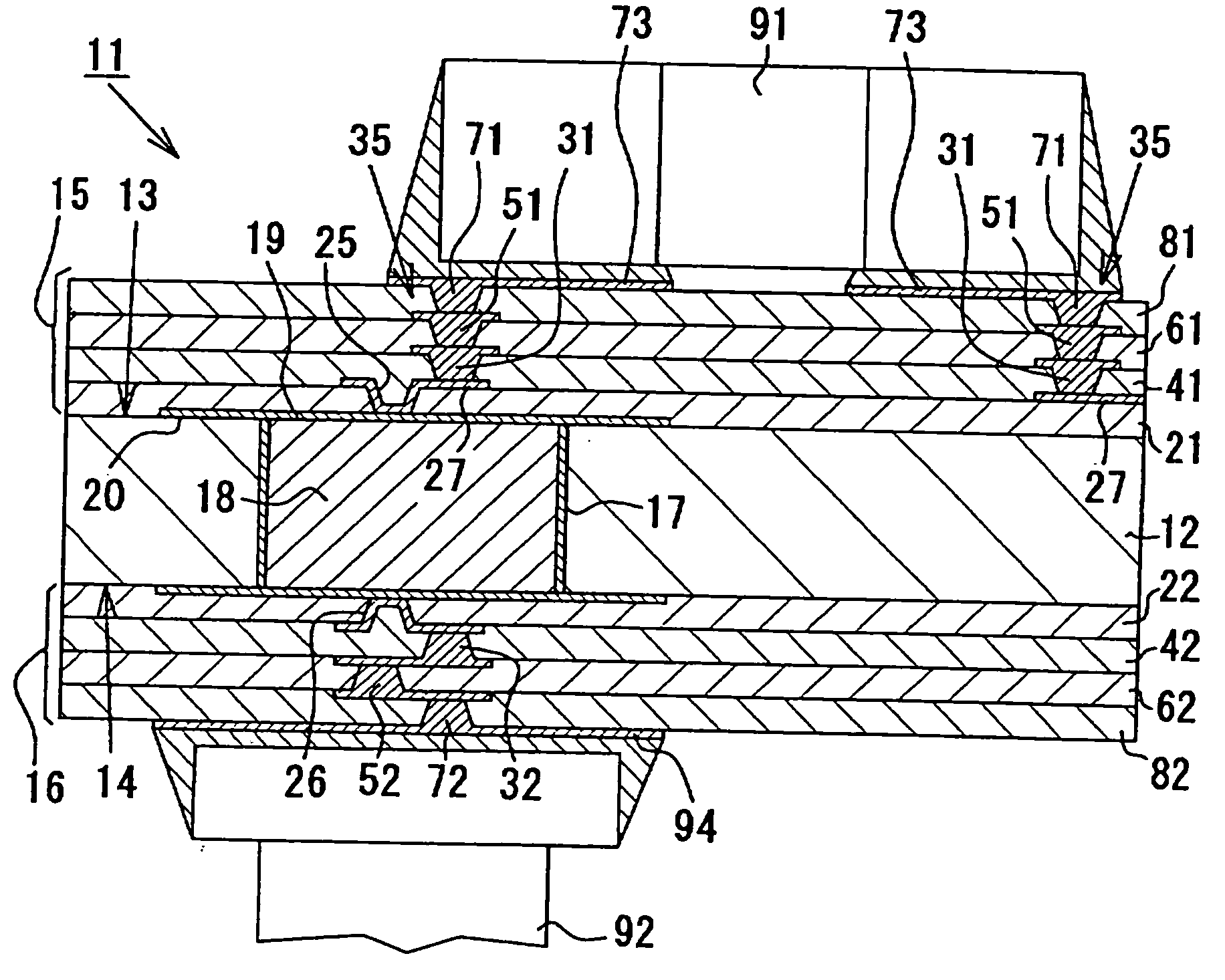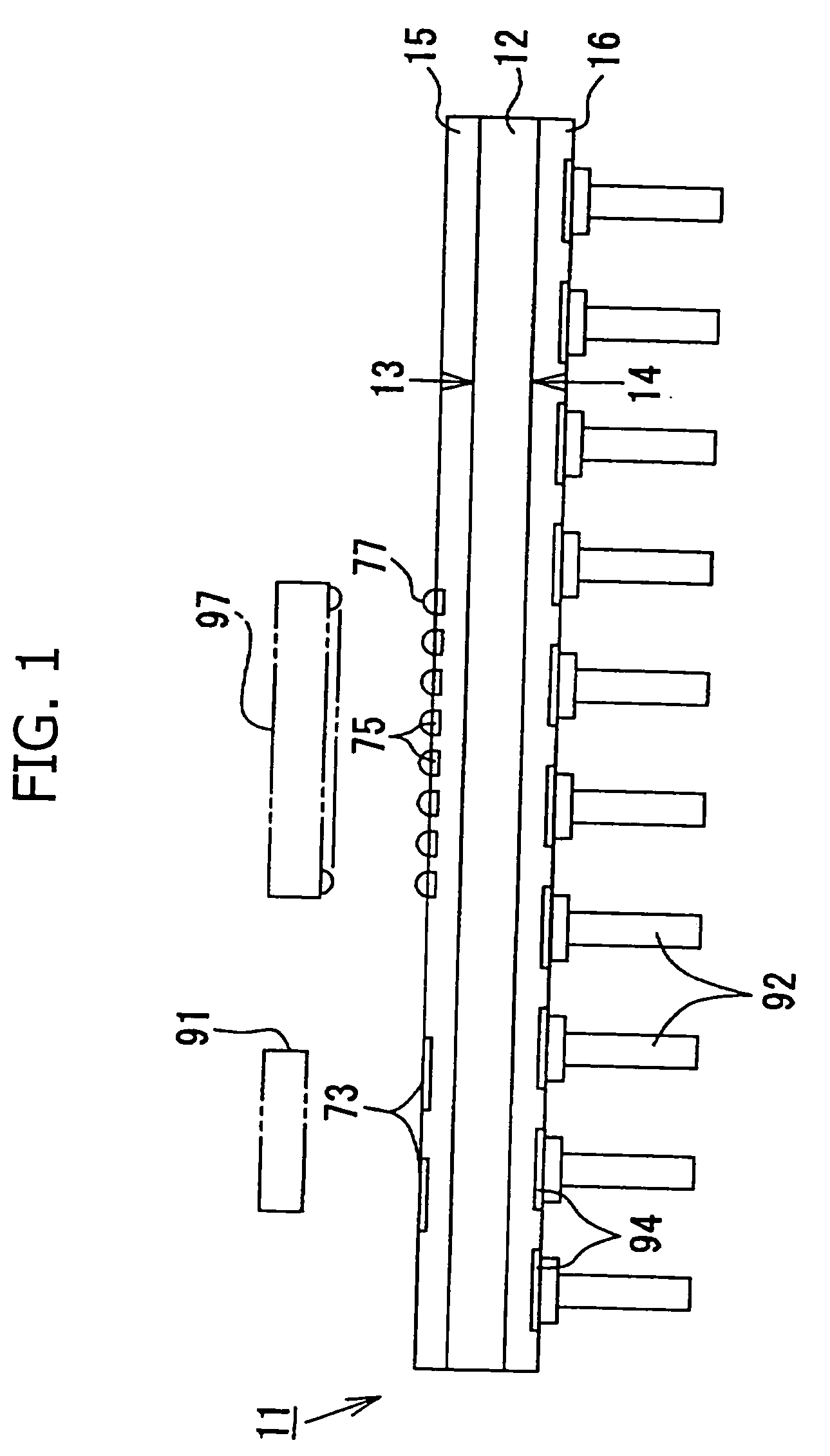Multilayer wiring board including stacked via structure
a wiring board and via technology, applied in the direction of printed circuit aspects, sustainable manufacturing/processing, final product manufacturing, etc., can solve the problem of cracking in the connection between the filled vias, and achieve the effect of excellent reliability
- Summary
- Abstract
- Description
- Claims
- Application Information
AI Technical Summary
Benefits of technology
Problems solved by technology
Method used
Image
Examples
Embodiment Construction
[0043] A “build-up” multilayer wiring board, generally denoted 11, as constructed according to one embodiment of the present invention, will now be described in detail with reference to FIGS. 1 to 9.
[0044] As shown in FIGS. 1 to 3, the multilayer wiring board 11 of this embodiment includes, in this implementation, a substantially rectangular substrate 12 as a core or base material. In a specific non-limiting implementation, the substrate 12 is formed of BT resin and has a thickness of about 600 μm to 800 μm. As shown in FIG. 3, an upper “build-up” layer 15 is formed on an upper surface (i.e., a first main surface) 13 of the substrate 12, and a lower “build-up” layer 16 is formed on a lower surface (i.e., a second main surface) 14 of the substrate 12. A number of plated through holes 17, typically having a diameter of about 200 μm to 300 μm, are formed in the substrate 12 at predetermined positions in such a manner as to extend through the substrate 12 between the upper surface 13 a...
PUM
 Login to View More
Login to View More Abstract
Description
Claims
Application Information
 Login to View More
Login to View More - R&D
- Intellectual Property
- Life Sciences
- Materials
- Tech Scout
- Unparalleled Data Quality
- Higher Quality Content
- 60% Fewer Hallucinations
Browse by: Latest US Patents, China's latest patents, Technical Efficacy Thesaurus, Application Domain, Technology Topic, Popular Technical Reports.
© 2025 PatSnap. All rights reserved.Legal|Privacy policy|Modern Slavery Act Transparency Statement|Sitemap|About US| Contact US: help@patsnap.com



